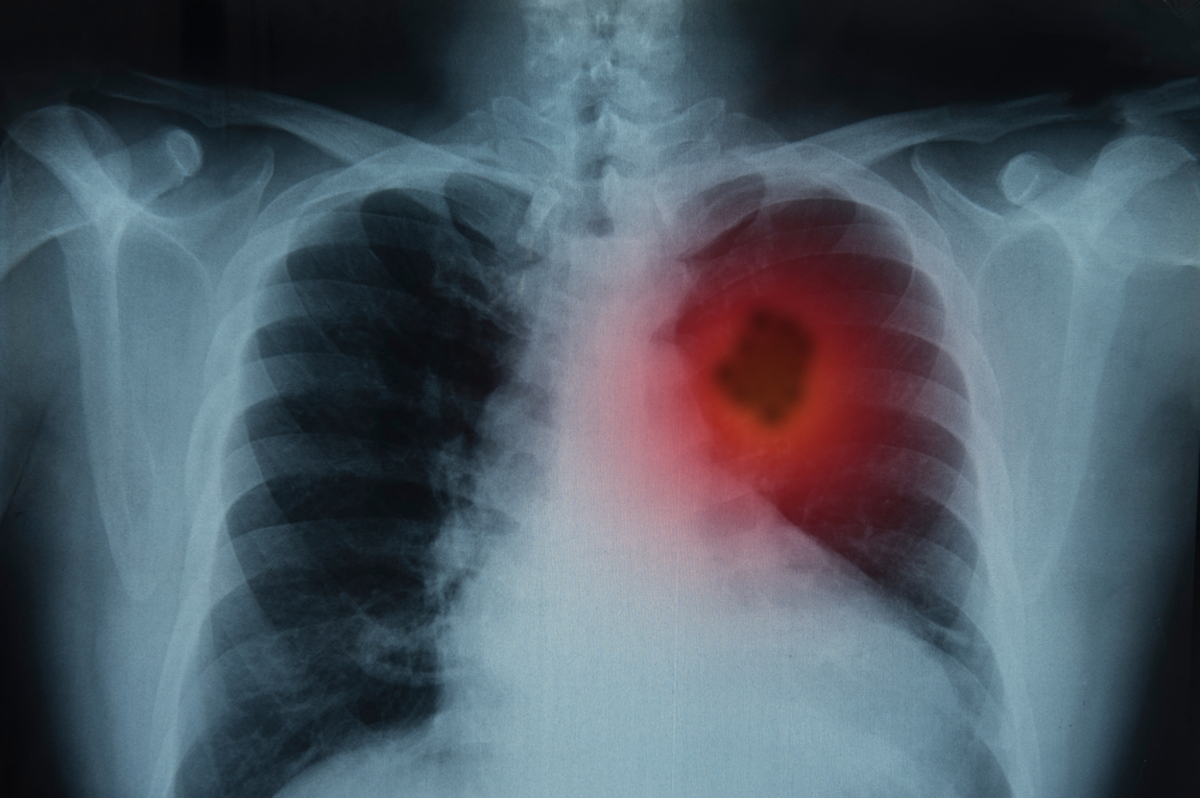Receiving a diagnosis of cancer is a real nightmare for most patients. After times of uncertainty, you finally know what it is, but often it is just the beginning. After the diagnosis, you’ll get more and more tests, and you’ve to start treatment immediately. Each year, about 100,000 Americans die from lung cancer, after fighting so hard to get better. That’s why it’s so important to get diagnosed at an early stage! The sooner your cancer is diagnosed, the better your chances of surviving this terrible disease. Therefore, it is incredibly important that you are aware of the warning signs. After all, a small cough is not always just a cough…

Symptoms of Lung Cancer
A simple cough is not always just an innocent cough. In most cases, it often points to the flu, Covid-19, or some other respiratory infection. Yet it can also be one of the first warning signs of lung cancer. In case your cough turns into a chronic cough – that is, you can’t get rid of it anymore – or you cough up blood or bloody (or funny-looking) mucus; make sure you make an appointment with your doctor soon.
Recurring Respiratory Infections
You might think pneumonia is just pneumonia and bronchitis is just bronchitis; “I just go to the doctor, he writes out antibiotics for me, I take them, and I’m good to go.” True, but the moment a respiratory infection keeps recurring, it is time to get a lung X-ray, because suffering from chronic lung infections – like pneumonia and bronchitis – isn’t normal. Chances are it is bad news. In case it’s lung cancer, these infections keep happening, because the body’s immune system has to fight the malignancy and cannot fight bacterial respiratory infections.
Other very important symptoms you should keep in mind are:
- Shortness of breath
- Chest pain
- Losing weight without trying
- Bone pain
- Headache
- Hoarseness
- Hand and finger pain & tiredness
- Mood swings
Do you recognize one or more of the above symptoms in yourself or a loved one? If so, make an appointment with your doctor to have a lung X-ray soon. Better safe than sorry! Continue reading on the next page and discover, among others, how lung cancer is diagnosed and staged.
As with other cancers, there are different types of lung cancers and each has its own stages. There are two different types of lung cancer, which are, small-cell lung cancer and non-small-cell lung cancer. After you’re diagnosed with this type of cancer, your oncologist will examine which of the two types you have, what stage you are in, and how best to treat the malignancy. To do this, the physician uses the TNM/G system:

TNM/G System
To know every little detail of your cancer, oncologists use the following system:
- Tumor: How big is the tumor, and where is it located – and has it already spread – in or nearby the lungs?
- Nodes; Has cancer already spread to nearby lymph nodes?
- Metastasis: Has cancer already spread to other parts of the body?
- Grade: How malignant and/or aggressive is the tumor?
Small-Cell Lung Cancer
After they’ve examined your cancer extensively, and they know it’s small-cell lung cancer, they will put you in the stage limited stage or extensive stage. If your cancer is in the limited stage, it means it’s just in one lung and may be in nearby lymph nodes. Fortunately, it hasn’t spread to your other lung or even passed that! If the oncologist tells you that you’re in the extensive stage, it means that cancer has spread to other areas in your lungs and maybe even beyond that. Small-cell lung cancer is a less common type of lung cancer, most people get diagnosed with non-small-cell lung cancer.
Non-Small-Cell Lung Cancer
After they’ve examined your lung cancer extensively, and they know it’s non-small-cell lung cancer, they will put you in one of the following five stages:
| Stage | Substage | Meaning |
|---|---|---|
| 0 | Tis | Cancer cells are only in the lining of the lung and have not spread to nearby tissue. |
| I | IA | Cancer is in the lung only and the tumor is small (less than 3 cm) |
| IB | Cancer is in the lung only and the tumor is larger (3-5 cm) | |
| II | IIA | Cancer has spread to nearby lymph nodes but the tumor is still small (less than 3 cm) |
| IIB | Cancer has spread to nearby lymph nodes and the tumor is larger (3-5 cm) | |
| III | IIIA | Cancer has spread to lymph nodes in the middle of the chest and/or the area between the lungs but is still only on one side of the body. |
| IIIB | Cancer has spread to lymph nodes on the opposite side of the chest, above the collarbone, or to other organs in the chest such as the heart or esophagus. | |
| IV | IVA | Cancer has spread to other parts of the body, such as the liver, bones, or brain. |
| IVB | Cancer has spread to both lungs, the fluid around the lungs, or to distant organs such as the adrenal glands. |
This table is a brief overview, to make it more clear. Please know that the meaning of each stage and substage can vary per person. Continue reading on the next page for more information about lung cancer treatment options.
After the lung cancer has been thoroughly investigated and staged, oncologists can set up a treatment plan. This differs from person to person and from type of cancer. As said before, every person with (lung) cancer is unique, and every cancer stage has its own treatment plan. Sometimes you only need surgery and can move on with your life – except for the (yearly) check-ups once you’re in remission. It may also just be that someone is so sick that they need every possible treatment, for instance, surgery, chemo, and radiation.

Surgery
This is self-explanatory; it involves a surgeon removing a part or pieces of the lung affected by cancer. If the tumor is too big or has spread to other parts of the lung, then no more surgery can be done, and they move on to one of the following treatments.
Chemotherapy
Chemotherapy is a drug specially designed to shrink/eradicate cancer cells. The drugs can be oral pills, fluids given through IV, or both. Often chemotherapy comes with a lot of side effects such as nausea & vomiting, neuropathy, hair loss, infertility, and weight gain. Another option that works to treat lung cancer is radiotherapy. When you undergo this treatment, high-energy X-rays are used to eradicate (remaining) cancer cells. Often this is done in combination with chemotherapy, where the tumor is first reduced by medication and then irradiated.
There are so many ways to treat cancer these days, the above-mentioned are just a few examples. Sometimes they are combined, but it can also happen that these treatments do not help (anymore), so other options should be sought. That’s why it’s very important to do your own extensive online research and stay up to date about new treatments. Do your symptoms not quite match up? Then check out other cancers here. Have you already been diagnosed with lung cancer, but aren’t satisfied with your treatment plan? Doing a second opinion in another hospital or oncology center is always a good idea. Start your search today:

